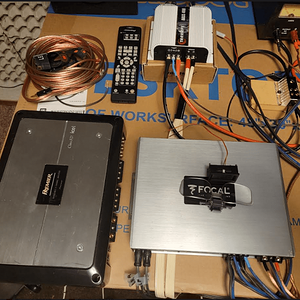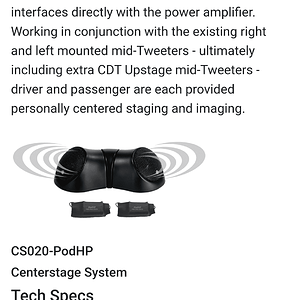john smith23
CarAudio.com Newbie
- 1

If you own a vehicle, then you should know the importance of having your car serviced regularly. This ensures that it will always be reliable and efficient.However, you’re also probably aware that car repair and maintenance can be a burden to your wallet, and at one point, you just find yourself saying, “How I wish I can fix my car by myself!”The thing is, you can.There is, in fact, a myriad of repairs that you can do by yourself – regardless of your experience or technical skill.All it takes is a bit of money, the proper tools, and being armed with the right knowledge.You don’t have to go to a car repair shops all the time!Here are some car repairs that you can do by yourself!Car Repair Tip #1:Changing Air FilterYou’ll need a new air filter for your car every 12,000 miles, which is approximately a year.Good thing is, you can replace your air filter at the comfort of your home. Here’s what you need to do:1. Find the filter under the hood of your car. It’s encased in a black rectangular box, with metal clips fastened on the side. If you’re having a hard time finding the filter, then immediately refer to your owner’s manual.
2. Inspect the casing. Note which way the filter is facing.
3. Remove the old air filter, and slip in the new one. Make sure you do it exactly how the old air filter was positioned.
4. Once you’re done, make sure to close the metal clips.Car Repair Tip #2: Changing Windshield WipersYou’ll need new windshield wiper blades every six months to a year of usage. The setup of wiper blades might vary from one car to another, so to be sure, you might want to check your owner’s manual.The process is a bit similar to changing your air filter. Here’s how you do it:1. Lift the blades, and then slowly remove the old blades.
2. Pay close attention to how the old blades are connected.
3. Most models have a tab on the underside of the wiper. If your car has this, then simply push the tab to detach the old blade.
4. Attach the new blades carefully, making sure that you don’t bend the arms or scratch your windshield.Car Repair Tip #3: Changing Spark Plugs
Spark plugs are often replaced after 30,000 miles. Once again, you can check your owner’s manual to be sure. Here’s how to get started:1. Spark plugs are attached to rubbery wires. They’re quite easy to find.
2. The number of your spark plugs depends on how many cylinders your car has.
3. Remove the wire from your first plug. However, remember that you’re not supposed to remove all of the wires at once. Spark plugs, after all, are fitted in a certain order, which you have to follow.
4. Utilize your spark plug socket and your ratchet to deftly remove the first spark plug.
5. Connect the new spark plug. Tighten it with a wrench.
6. Attach the spark plug wire again.Car Repair Tip #4: Battery Maintenance
Batteries, after all, make sure that your vehicle will be running seamlessly and efficiently. Check out the following steps:1. Remove your battery terminals.
2. Clean the posts with a liquid cleaner and a wire brush. To guarantee that they’re spick and span, you can opt for a professional liquid from an auto shop.
3. Rinse the fluid out with a bit of water.
4. Dry the posts.
5. Finally, replace the battery terminals.Car Repair Tip #5: Radiator Flush
Refer to your manual to find out whether you need to flush the radiator every year or every two years. Here’s how:1. Make sure that your vehicle is already cool before you start.
2. Find the radiator’s drain plug. Put your used coolant reservoir in place, then unscrew the drain plug to let the coolant drain fully.
3. Replace the drain plug and take off the radiator cap.
4. Add the radiator flush cleaning solution, and then fill the rest with water. Put back the radiator cap.
5. Rev up the car, letting it run until it returns to its normal operating temperature.
6. After that, turn on your heater to the hottest plausible position. Let your car run for at least 10 minutes.
7. Once 10 minutes have elapsed, turn off your car and wait for the engine to cool.
8. Now, fill the radiator with your new coolant.A final note: Ensure that you dispose of your old coolant properly and safely, since it’s a toxic material.You can bring it to an auto shop, gas station, or a mechanic.Now that you know some of the basics, you can proudly say, “I can fix my car!”Key TakeawayFrequent maintenance guarantees that your car will always run efficiently and reliably. More than that, it will also help you avoid costly repairs in the future.That’s why, at one point, you’ll inevitably declare that, “I have to fix my car by myself.”Luckily, these are some of the car repair tips that you can actually do on your own — regardless of your skill level!
Credit: https://chartandmarkets.com/


